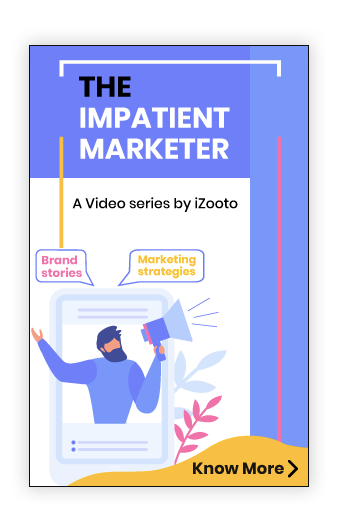Adblocker adoption is shooting through the roof. Display ads are barely clicked on. Email is not scalable. In essence, growth is becoming increasingly difficult to sustain. We get it. It is not just user acquisition, user engagement is becoming equally difficult. Extending a layer of automation is obvious to a marketing tool. Here is a guide that talks about how you can use Drip Notification Campaigns to automate redundant tasks and put them on autopilot.
Automating Engagement With Drip Push Notification Campaigns
Objective behind marketing automation is simple -
- Avoiding redundant tasks
- Investing the time saved on better things such as audience segmentation, optimization, and more.
Depending upon the scale, sophistication involved, marketers can automate most of their end user communication using web push notification. The triggers for pushing out notification can vary. In this post, we will talk about the simplest trigger - Subscribing to web push notifications.
Communicating Too Much or Too Little
We have seen more than often that, marketers often wait long before they send out their first notification. The reason cited is the size of the audience. We have already seen that how not engaging with users at the right time, creates a shock and awe situation, resulting in a high number of users unsubscribing or blocking notifications. What you also don't want to do is communicate too much by pushing them too many notifications and pushing them to block or unsubscribe.
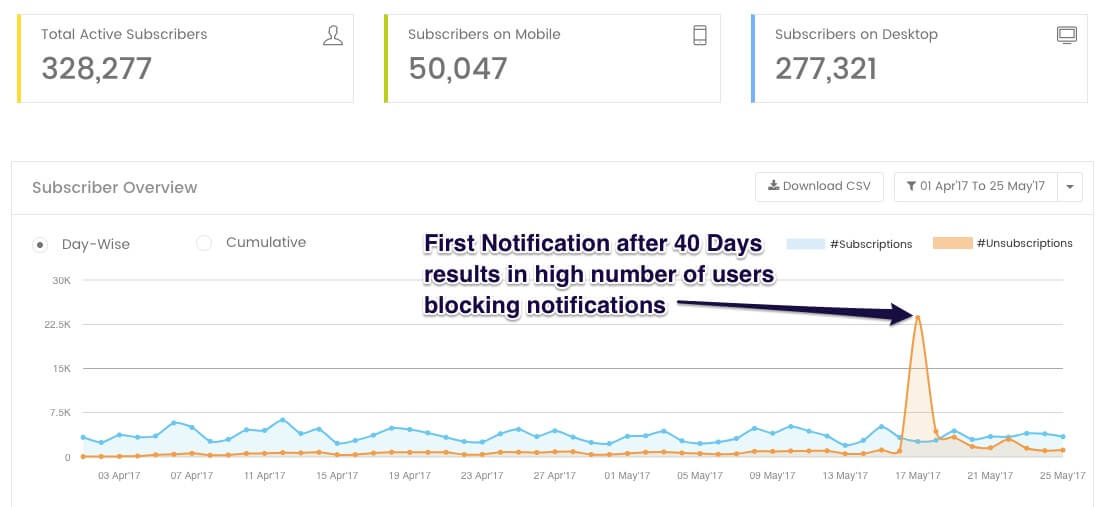 Why sending timely notifications is important-
Why sending timely notifications is important-
How Can Marketing Automation Help?
Automating notification using Drip Campaigns can help marketers save a great deal of time. To setup a Drip Campaigns or Automated Notifications, you need to ensure 3 things –
- Defining a dynamic audience segment
- Identify a trigger
- Craft a relevant notification to be sent with respect to the trigger and set its frequency
Sending notifications on a regular basis takes a good amount of time which usually eCommerce marketers can’t afford. With the help of automation, eCommerce stores can engage with a larger audience efficiently without any extra effort.
What is Dynamic Audience and Why do you need a dynamic audience:
A dynamic audience is essentially an audience segment that is created using filters such as events, time ( no date ) or user behavior and grows organically. An example of a dynamic audience is :
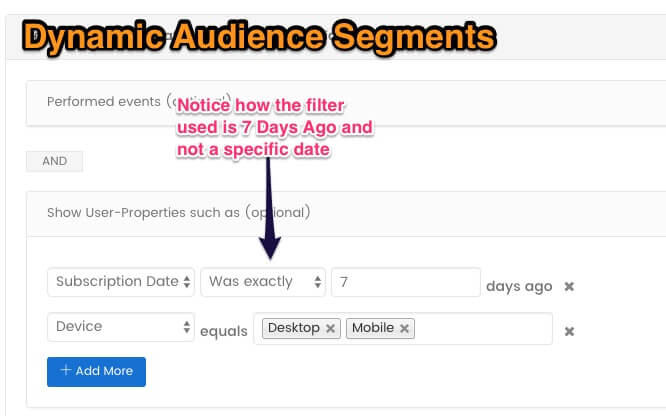 Dynamic Audience Segments perform better in the long run.
Dynamic Audience Segments perform better in the long run.Here is an example of a static audience segment-
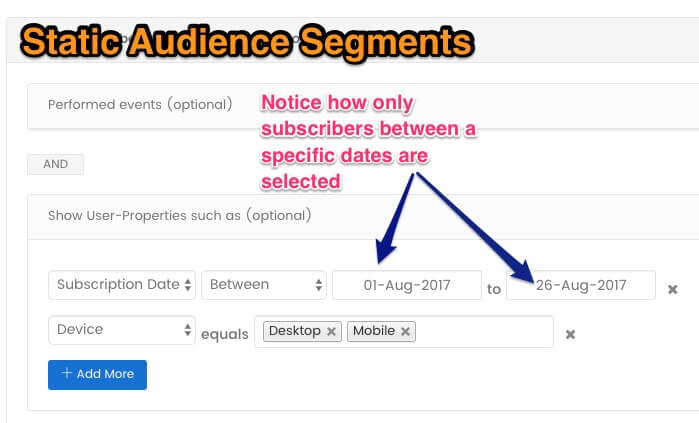 Static Audience Segments are relevant for short-term only.
Static Audience Segments are relevant for short-term only.
You could also use a combination of filters such as Device, Subscription Date, Location to create dynamic audience segments. For instance:
Here are some recommended dynamic audience segments that will help you craft an engagement routine:
| eCommerce | Media and Publishing | Services and SaaS |
| Subscribed 1 Day Ago and
Device = Mobile and Location = US |
Subscribed 1 Day Ago and Device = Mobile and
Location = California |
Subscribed 1 Day Ago and Device = Desktop and
Location = UK |
| Subscribed 7 Days Ago and
Device = Desktop and Language = German |
Subscribed 30 Days Ago and
Device = Desktop and Language = Hindi |
Subscribed 1 Day Ago and
Device = Mobile and Preference = <> |
- Identifying a Trigger
Triggers are essentially events basis which you would want to send out the first communication. These can be standard events like subscribing to notifications or custom events such as Add To Cart.
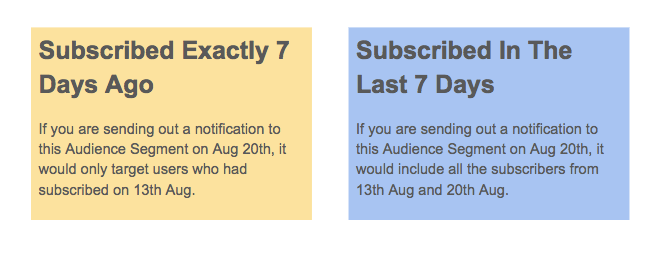 Specific Segmentation Filters To Target Specific Set of Users
Specific Segmentation Filters To Target Specific Set of Users
Subscription date is a great trigger to setup your first drip notification campaign. Specific filters can be used to segment users. Depending upon the industry and the frequency with which you want to communicate, you can create specific segments. Here is a sample of Audience Segments created by their date of subscription-
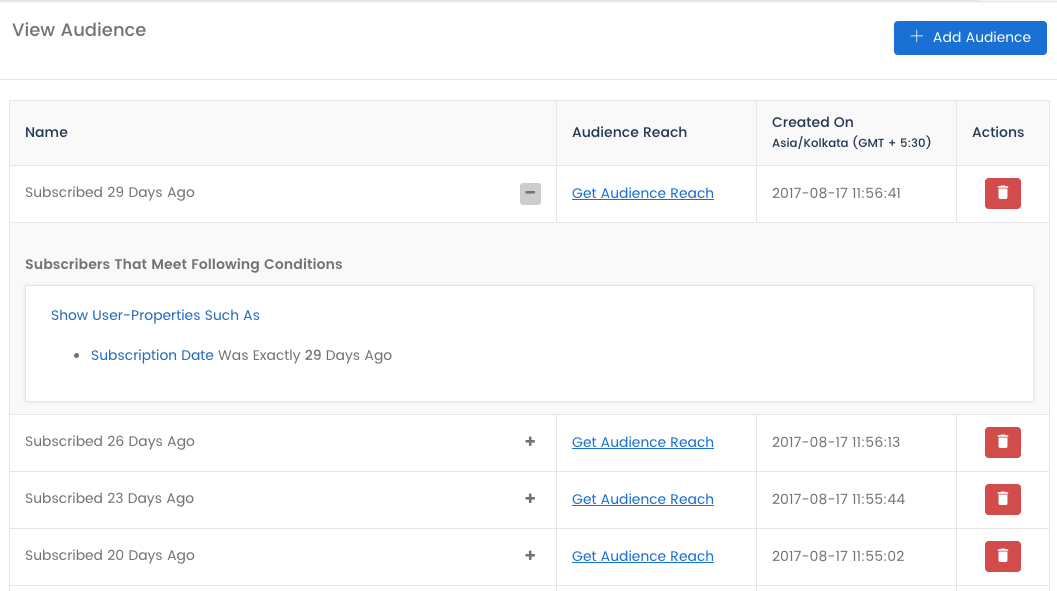 Segmentation of Subscribers basis their Age of subscription-
Segmentation of Subscribers basis their Age of subscription-Setting up Drip Notification Campaigns
Setting up drip notification campaign requires two things -
- Notification Content with respect to the Audience
- The frequency at which the notification will be sent to a specific audience: Daily / Weekly / Monthly.
 Setting Frequency of Drip Push Notifications
Setting Frequency of Drip Push Notifications
Here is a step by step guide on how to setup your first drip notification campaign. After you’ve created the desired audience, here is how you can automate push notifications for them using iZooto:
1. Click on Send notification in the left sidebar.
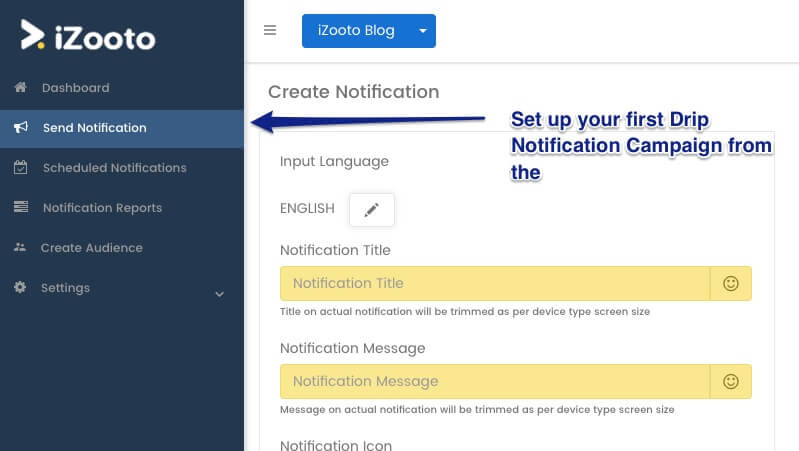
Create the notification that you want to send.
2. Select the audience that you created using audience builder.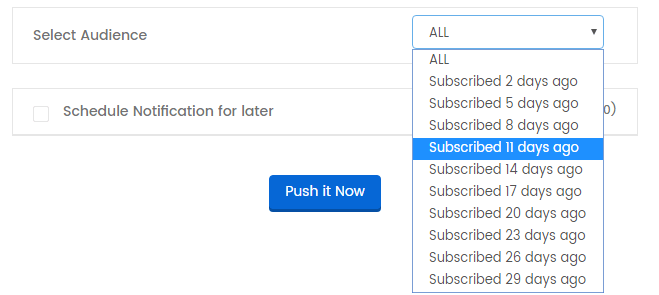
3. Click on Schedule Notifications for later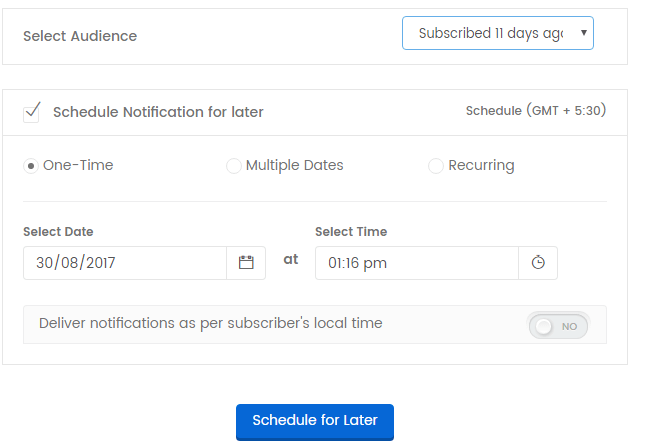
4. Select Recurring and choose the start date. You can select an end date if you are running a time-bound campaign.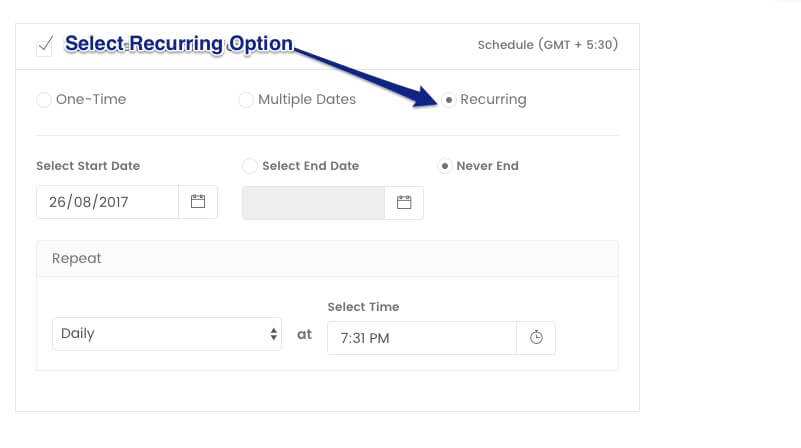
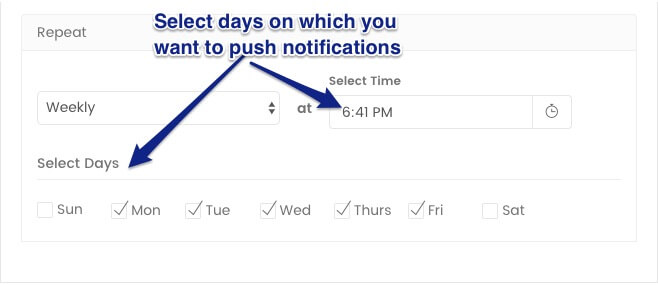 Drip Push Notifications - Executed on a Weekly Frequency
Drip Push Notifications - Executed on a Weekly Frequency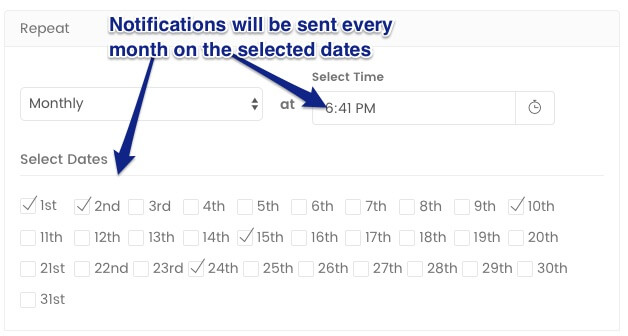 Drip Push Notification executed basis the date of the month
Drip Push Notification executed basis the date of the month Executing Drip Notification Campaign Daily
Executing Drip Notification Campaign DailyScheduling notifications beforehand will help save time and plan better. With iZooto, marketers can now create drip campaigns effortlessly. Sending notifications to audiences based on subscription dates will ensure that they get notified differently, based on the number of days they have been subscribed to your notification. For example, on Day 1 subscribers will receive a different notification as compared to what they will receive on Day 14. Pushing out notifications in this manner will drive traffic and build recall value. The best part about this is that- it only has to be done once.
Here is a series of notifications that can be used as reference:
Day 01- Greet your subscribers with a welcome notification. Reward your subscribers by offering them a discount coupon.

Day 07 - Call your subscribers back to your website by delighting them with an irresistible offer. Give the subscribers a reason to come back to your website and make a purchase.
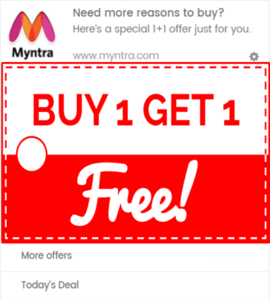
Day 14- Appreciate your subscribers for staying with you and make them feel wanted.
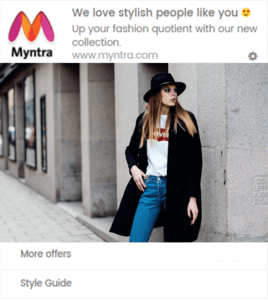
Day 21- Send a special deal to your subscribers.
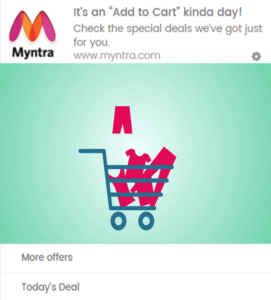
Day 28- Create a sense of urgency among your subscribers and get them to visit your website.
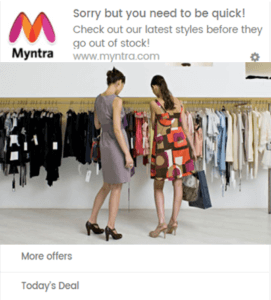
In this particular example, each new subscriber will receive 5 notifications in a month. This means subscribers will have a reason to keep coming back again. You can increase or decrease the frequency of the notifications based on your requirements.
Convert more of your website traffic into sales with iZooto Web Push Notifications. Start your FREE trial Now.
